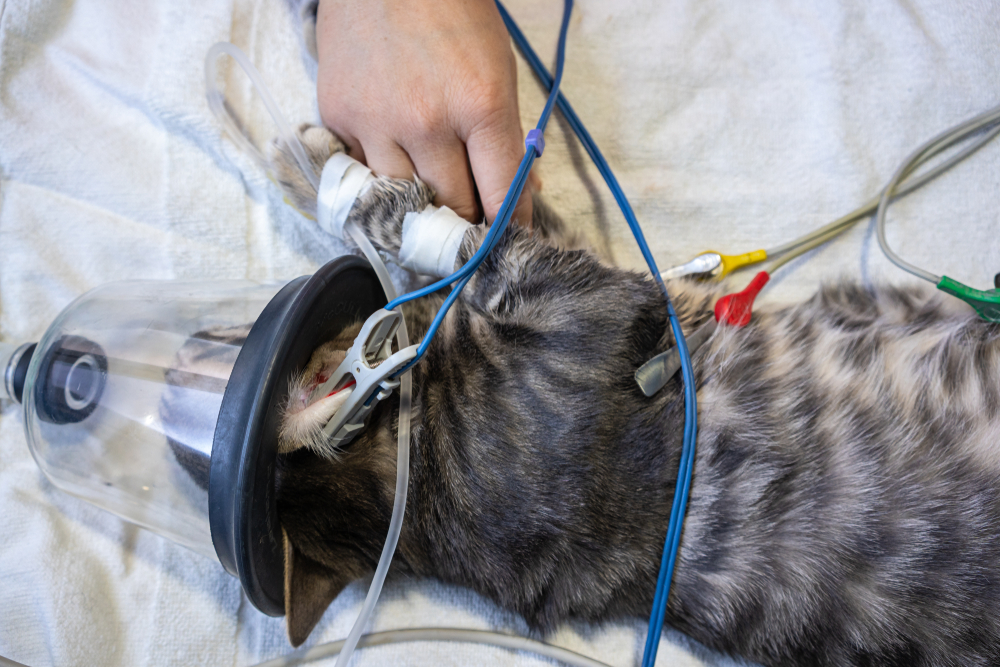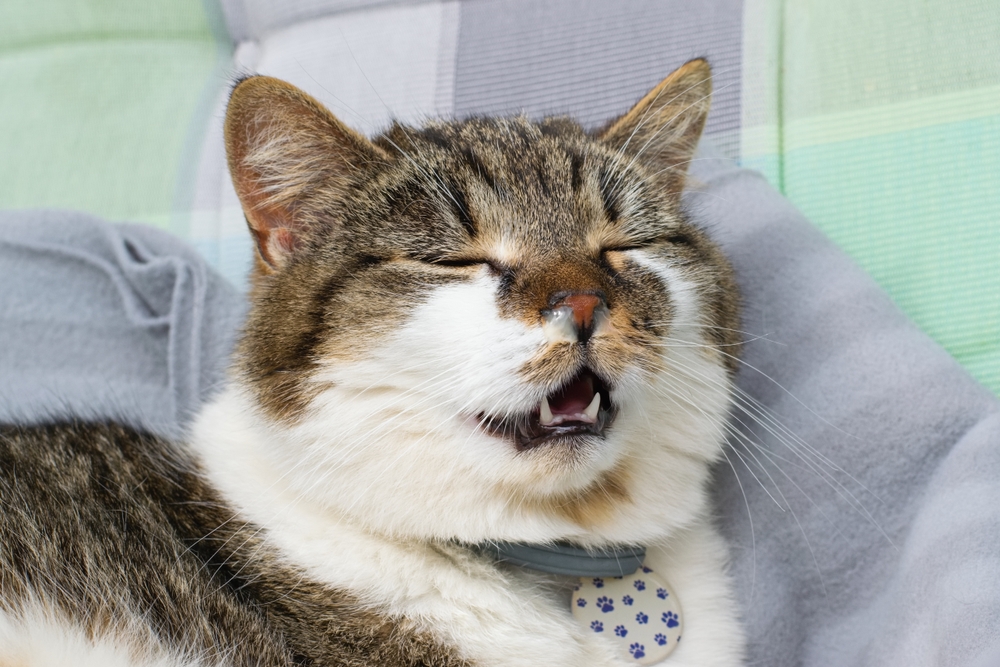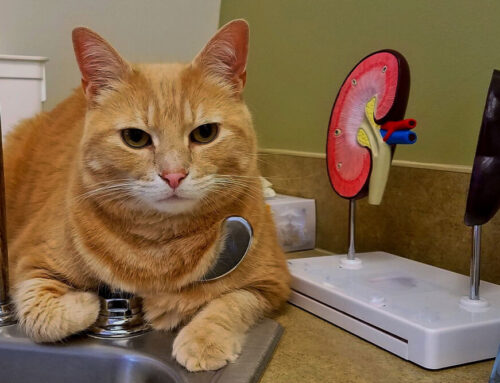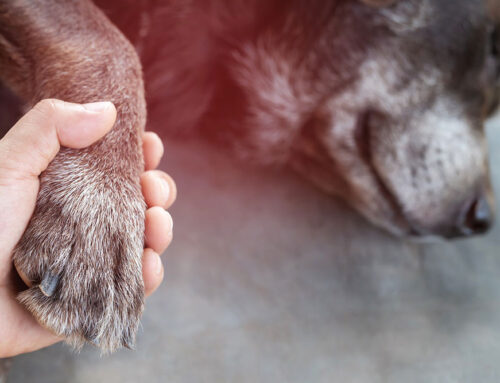When Sneezing Turns Serious: When to Bring Your Cat to Urgent Care for Respiratory Illness
Your cat starts sneezing- a little at first, then constantly. Soon, you notice watery eyes, thick nasal discharge, and a refusal to eat. What began as a mild sniffle has become something more concerning. These signs often point to a feline upper respiratory infection (URI), and while most are not immediately life-threatening, they can quickly become urgent.
At Peak Pet Urgent Care, we provide immediate evaluation and treatment for cats with respiratory distress, congestion, and other acute illnesses. We fill the gap between your primary veterinarian and the emergency room, treating problems that can’t wait but don’t yet require hospitalization.
Recognizing When a Cat’s Cold Becomes Urgent
Cats are masters at masking discomfort, but respiratory illness can escalate fast- especially in kittens, seniors, or cats with preexisting health conditions. Knowing when to seek urgent care helps prevent serious complications.
Call or come in if your cat shows any of these signs:
- Persistent sneezing or thick, colored nasal discharge
- Wheezing or breathing with an open mouth
- Refusal to eat or drink for more than 24 hours
- Extreme lethargy or hiding behavior
- Red, swollen eyes or discharge that sticks eyelids together
- Coughing or unusual respiratory effort
Even if symptoms seem mild, cats can dehydrate and weaken quickly when they can’t smell or eat. At Peak Pet Urgent Care, our medical team triages each patient and prioritizes those struggling to breathe, eat, or maintain hydration.
Understanding Upper Respiratory Infections in Cats
What’s Really Going On When Your Cat Is Congested
Upper respiratory infections affect the nose, throat, and sinuses. They’re often caused by two contagious viruses- feline herpesvirus-1 and feline calicivirus– which account for up to 90% of cases.
These viruses damage the delicate tissues of the respiratory tract, making it easier for bacteria to invade. This is why a “simple cold” can turn into a more complicated infection with colored discharge, fever, or facial pain. In some cats, especially those under stress or with weak immune systems, infections can linger or become chronic.
How Stress and Immunity Intersect
Stress is one of the most powerful triggers for illness. For cats carrying latent herpesvirus, stressful events- such as travel, boarding, or even a new household pet- can reactivate the virus and cause symptoms to return.
Common feline stressors like changes in routine, loud noises, or unfamiliar environments suppress the immune system, making cats more susceptible to illness. That’s why flare-ups often follow vacations, moves, or major household changes.
Core feline vaccinations – especially for herpesvirus and calicivirus – dramatically reduce both infection risk and symptom severity. If your cat is overdue for vaccines, follow up with your primary veterinarian for a wellness exam and vaccination update once your cat has recovered.
Causes and Complications We See in Urgent Care
Bacterial Infections
Bacteria often join the picture after a viral infection weakens respiratory defenses. Cats with Bordetella bronchiseptica or Chlamydia felis infections may have persistent coughing, thick discharge, or painful eyes.
Bordetella bronchiseptica is especially common in multi-cat homes and shelters, while Chlamydia vaccination may be recommended for cats with recurring conjunctivitis or exposure risk.
These bacterial complications respond best to targeted antibiotic therapy after diagnostic testing.
Chronic Conditions and Underlying Illness
Cats with asthma or chronic bronchitis frequently experience inflammation and narrowing of the airways. When these chronic conditions overlap with a viral or bacterial infection, symptoms intensify: coughing becomes more forceful, wheezing louder, and breathing more labored. Even minor congestion can make it hard for these cats to move air effectively. In urgent care, our goal is to quickly relieve airway inflammation, restore oxygen levels, and prevent respiratory fatigue that can become life-threatening if not addressed.
Cats with immune-suppressing diseases such as feline leukemia virus (FeLV) and feline immunodeficiency virus (FIV) face additional challenges. Their weakened immune systems can’t fight infections efficiently, allowing even mild respiratory pathogens to cause prolonged or recurring illness. These cats may develop chronic nasal discharge, persistent eye infections, or secondary bacterial pneumonia that requires aggressive therapy and careful monitoring.
When a “Cat Cold” Affects the Eyes
Upper respiratory infections don’t just cause sneezing and congestion- they can also lead to painful eye problems. The same viruses that inflame the nasal passages often spread to the eyes, causing conjunctivitis, or inflammation of the pink tissue surrounding the eye. Cats with conjunctivitis may have red, watery eyes, swelling, and sticky discharge that makes it hard to open their eyelids.
As infection progresses, the surface of the eye (the cornea) can become damaged. Rubbing or pawing at irritated eyes increases the risk of corneal ulcers, which are open sores that cause severe pain, squinting, and light sensitivity. Left untreated, ulcers can deepen rapidly, threatening vision or even the integrity of the eye itself.
In some advanced cases, infection and ulceration cause irreversible damage. When the eye can no longer be saved and becomes a source of ongoing pain, surgical removal, known as eye enucleation, may be the most compassionate solution. This procedure relieves chronic discomfort and allows the cat to return to a comfortable, normal life.
How Peak Pet Urgent Care Treats Cat Respiratory Illnesses
Step 1: Rapid Triage and Diagnostics
Our medical team begins by assessing your cat’s breathing rate, effort, and oxygen levels. Diagnostic tools such as radiographs, bloodwork, and nasal or eye cultures help identify the underlying cause. Our urgent care services are designed for fast results so treatment can start right away.
Step 2: Stabilization and Targeted Treatment
Once the cause is identified, our goal is to relieve discomfort, improve breathing, and prevent worsening infection.
- Supportive care includes fluid therapy, appetite stimulants, and anti-nausea medication to keep cats hydrated and eating.
- Antibiotics or antivirals may be prescribed when bacterial or severe viral infections are confirmed.
- Nebulization therapy helps loosen mucus and deliver medication directly to inflamed airways.
- Pain management and anti-inflammatories ease discomfort so your cat can rest and recover.
If your cat’s condition requires round-the-clock monitoring, our veterinarians coordinate safe transfer to a 24-hour emergency facility for continued care.

When a “Cold” Becomes an Urgent Situation
Some cat colds resolve on their own- but others don’t. A simple sneeze can turn into labored breathing, pneumonia, or severe eye infections in a matter of days.
Bring your cat to urgent care if:
- They stop eating or drinking
- You notice open-mouth breathing or blue-tinged gums
- There’s thick, green, or bloody nasal discharge
- They seem unusually withdrawn or weak
If symptoms worsen after hours, contact one of our trusted emergency partners for continuous care.
We’re Here When Your Cat Needs Urgent Relief
You don’t have to guess whether your cat’s sneezing is “just a cold” or something more serious. At Peak Pet Urgent Care, our team provides immediate, compassionate evaluation and treatment for feline respiratory illnesses with no appointment needed.
If your cat is struggling to breathe, eat, or rest comfortably, call us or come in today. We’ll assess, stabilize, and help your cat get back to feeling like themselves again, all while keeping your primary veterinarian informed every step of the way.






Leave A Comment